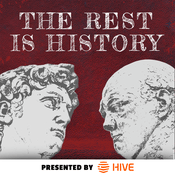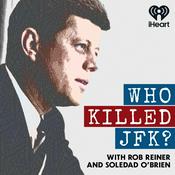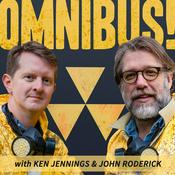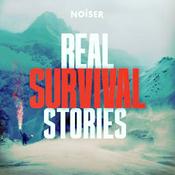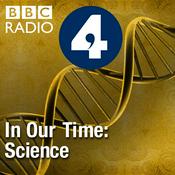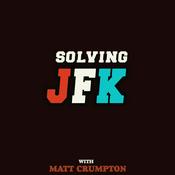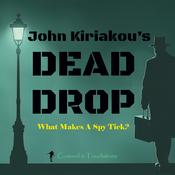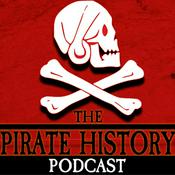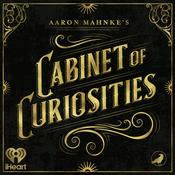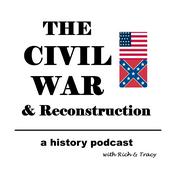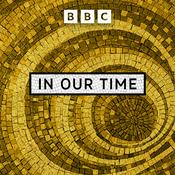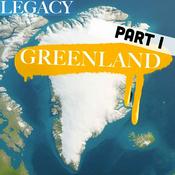76 episodes

Braiding The Personal with the Ecological, with HOTSHOT Author River Selby
10/17/2025 | 1h 8 mins.
Welcome to our second episode with women and non-binary firefighters who have written books about their experiences working both in fire and on hotshot crews more specifically. Our guest for this episode is HOTSHOT author River Selby (they/them), who spent seven years as a wildland firefighter—four of which were as a hotshot—from 2000 to 2010. They've since gotten their undergrad and MFA (in fiction) at Syracuse, and are currently working towards a PhD in Nonfiction with an emphasis in postcolonial histories, North American colonization, and postmodern literature and culture. This unique background allowed River to create a phenomenally in-depth book that covers not only their own experiences of working on crews and personal vignettes of life on and off the fireline, but it also paints a rich history of different fire ecologies across the American West (and world), and how colonization and fire suppression in the Western US (and elsewhere!) have set the stage for our modern relationship with fire. In our conversation, River and I talked about how firefighting allowed them to heal and grow, in a way, from the addiction, homelessness and violence that they had experienced in their youth. We spoke about some of the more academic themes of the book, including how colonization really informed our modern culture of fire suppression and—by extent—the culture of hotshotting. We spoke about the importance of Indigenous practices and land stewardship in righting this ship, as it were, and chatted a bit about our own experiences with hotshot culture and how it framed our experiences on fire crews. Click here to buy River's book HOTSHOT: A Life on Fire!Click here to read an excerpt of HOTSHOT, which was published in High Country News in August.Click here for River's book tour dates over the next few weeks. Click here to support Life with Fire's Patreon, which is helping keep this ship afloat while Amanda is in grad school.

The Intricacies of Hotshot Culture, with Wildfire Days author Kelly Ramsey
8/07/2025 | 1h 26 mins.
We're bringing you two, count em TWO, episodes with women and non-binary firefighters and writers who have written books about their experiences working both in fire and on hotshot crews more specifically. The first in this short series is with author Kelly Ramsey, whose book WILDFIRE DAYS was released in June. Kelly and I spoke about some of the emotional toll of fighting fire—including the terrifying feeling of not feeling like you belong, especially in such an intense work environment—as well as the process of writing a book (including the nearly 50,000 words she wrote in her Notes app during her time in fire). A large part of our conversation centered on the many intricacies of hotshot culture that we both witnessed (and which, in some cases, left us both confounded). Many anecdotes, laughs and shared experiences ensued. This was a fun one to record and hopefully it's just as fun to listen to!Here's another link to Kelly's book in case you missed the first one ;) Here's the Life with Fire Patreon, in the event you'd like to support me through the transition to grad school (where I will continue to publish podcast episodes, and will have much more access to lots of smart fire people as I'll be in Missoula!)

The Social Contract of Managing Fire with Stephen Pyne
7/17/2025 | 45 mins.
Welcome to our second episode with THE Stephen Pyne! Stephen is a renowned author and fire historian who, in addition to his academic life, also spent over a decade working on a fire crew on the North Rim of the Grand Canyon early in his career. Given this background, he seemed like quite possibly the perfect person to chat with about the recent Dragon Bravo Fire in Grand Canyon National Park. For a quick primer, the Dragon Bravo Fire started three miles north of the North Rim of the Grand Canyon during a lightning storm on July 5th. On Sunday, it destroyed the historic Grand Canyon Lodge and dozens of other buildings in the adjacent complex. It was being managed for resource benefit, or was in other words a "managed fire". I’m not going to go into all the details on the fire itself, but here’s a thorough, measured analysis from my friend Zeke at the Lookout regarding what took place over the week or so that the fire was being “managed for resource benefit” (I’ll get into what this means in a minute). Zeke also provides some of the behind the scenes context on wildfire decision making and some other educated thoughts that are very deserving of your time.Stephen, as you'd expect, had some great perspective to share about this event. While we avoided armchair quarterbacking the decision making on the fire, Stephen was able to speak a bit about the decades of precedent for this kind of wildfire tragedy in the Southwest, about the background of managed fire use in the National Parks, and how important managed fire can be to reducing wildfire risk—but only if we acknowledge the limitations of managed fire policy and take more strides to improve our processes and learn from our mistakes. One of the improvements Stephen advocates for is being more forthcoming about managed fire with the public, which would include agencies being very clear about what managed fire is and isn't, what the objectives of managed fire typically are, what preparations have been made to make managing a fire the right decision and also—importantly—that mistakes can happen and how we can better prepare in the event that they do. The biggest takeaway from this episode is that we've done a poor job of building trust with the public, and especially so around the practice of managed fire. Perhaps now is a good time to have that conversation, and to figure out how we can reframe this conversation so that people get more of a glimpse at managed fire when it goes right?For more background on Stephen, check out his TED Talk on how fire shapes everything, or this great essay he published in Scientific American last spring.

Community Resilience Series Ep.3: Preparing for and Recovering From Megafires with Butte County Fire Safe Council Executive Director Taylor Nilsson
5/30/2025 | 47 mins.
Welcome to the third and final episode of our Community Wildfire Resilience Series, supported by Fire Aside!In this episode, we spoke with Butte County Fire Safe Council Executive Director Taylor Nilsson. Butte County, CA has seen more catastrophic fire in the last eight years than most places in the West, possibly even the world. Starting with the Camp Fire in 2018 (85 killed, 14,000 homes lost), then the North Complex in 2020 (16 killed, 2,300 structures lost), then the Park Fire in 2024 (700+ structures destroyed), Butte County has seen 50% of its Wildland Urban Interface impacted by wildfire in the last seven years, and over 90% of its WUI impacted since 1999. This being the case, folks in this area have a deep understanding not only of preparing for wildfire, but of the long process of recovering from it—while knowing from experience that they simultaneously need to be preparing for the next one. Taylor spoke about the challenges of preparing for more fire while also recovering from—in Butte County's case—multiple deeply impactful wildfires that communities are still reeling from. In what has become an increasingly common occurrence in California, communities can still be deep in the recovery phase as a fire scar cycles back into susceptibility to wildfire. The Camp Fire scar, for example, is becoming increasingly at risk to more wildfire, particularly as these previously forested landscapes have become more brush-dominated post-fire. Reforestation and restoration in such landscapes (particularly those undergoing a vegetation type conversion) is tricky, and Taylor speaks to this too—to the realities of salvage logging and how this practice can fit into sound restoration planning, as well as to the lack of technology to handle the significant biomass that needs to be removed to make recently un-burned landscapes in Butte County more resilient to future fire. We talked about the immense community trauma, and how Taylor and the Butte County staff have worked through their own healing processes while facing this community trauma firsthand. Above all, this episode highlighted the critical work that Fire Safe Councils in California do, in part because they are working one-on-one with community members in many cases and can therefore be a consistent, guiding presence through the wildfire preparedness, response and recovery phases. Communities and residents recovering from wildfire need a sustained, familiar presence like this, and this is exactly the type of thing that reduces recovery timelines and helps communities heal. As we wrap up this series, we want to once again thank Fire Aside for their support of the last three episodes of the podcast. Support like this allows us to keep this thing rolling, and we can't express how grateful we are to our supporters—past and present, including on Patreon! Thank you, thank you, thank you for believing in what we're doing!Check out Butte County FSC on their socials (linked below)! Whether you live in Butte County or not, I think their website and some of their programming is very replicable elsewhere, so give them a follow and remember—imitation is the sincerest form of flattery!Facebook: https://www.facebook.com/buttefiresafeInstagram: https://www.instagram.com/buttefiresafe/?hl=enWebsite: https://buttefiresafe.netLinkedIn: https://www.linkedin.com/company/butte-county-fire-safe-council/ Time Stamps: 00:00 - Episode Start00:42 - Amanda Intro07:39 - Taylor's Background09:45 - Recent Fires In Butte County12:08 - Dealing with Hazard Trees14:56 - Trauma-Informed Care Post-Fire17:36 - Recovery Takes Multiple Years18:52 - Current Butte County Work On Burn Areas21:45 - Cost Of Removing Hazard Trees22:41 - Presence of Blue Stain In Recently Burned Areas24:56 - Salvage Logging as Part of Restoration Planning25:45 - Mill Infrastructure In Butte County28:26 - Butte County Population Response29:47 - Participation Rates in Fire Safe Council Programming31:35 - How Fire Aside Has Bolstered The Work the Butte County FSC Is Doing38:04 - Communities Are Struggling With Staffing—What Does This Mean For Recovery?40:12 - Fire Safe Council In Collaboration with Other Local Entities41:06 - Butte County Collaborative Group43:51 - The Importance of Sharing Lessons Learned 45:43 - Prioritizing the Knowledge and Practices Of Local Indigenous Tribes46:45 - Amanda Outro47:32 - End Of Episode

Community Resilience Series Episode 2: The Importance of Scaling Up Home Risk Assessments with Fire Aside CEO Jason Brooks
5/21/2025 | 47 mins.
Welcome to the second episode in our series about community-level wildfire resilience, supported by Fire Aside! We spoke with Fire Aside CEO and co-founder Jason Brooks about how Fire Aside—a home assessment platform that allows agencies to have direct 1:1 engagement with residents on resilience actions they can take—fits into bigger picture policy, data and decision making around community wildfire resilience in California and beyond.Fire Aside was developed in Marin County, CA alongside the county fire department there, a partnership that was spurred by Jason's own interest in improving the wildfire resilience of his own property and not knowing exactly where to start. That was in 2020—now, Fire Aside is being used by over 100 departments in nine states to increase the efficiency of their home assessment processes and improve engagement with residents who want to improve their defensible space and home hardening. It's become clear that increasing resilience actions at the neighborhood level, rather than just the homeowner level, is the best way to meaningfully reduce risk in the WUI, where fires often spread home to home rather than via vegetation; this scale piece is a huge part of what Fire Aside does, and is what makes it such a compelling technology in an era of urban conflagrations like those in LA this winter (or Boulder, Lahaina, Paradise etc before). Jason and I spoke about the impetus for developing the platform, as well as how it can potentially be utilized to help inform decision making and even funding needs at the city or county level. Down the road, the data procured from Fire Aside may even be useful in informing state policy or other big picture decision making. (Disclaimer: Fire Aside does not own any of the data that is compiled through the app/platform. Residents and departments using the platform own this data.)We appreciate Fire Aside's work and their support of this series on community resilience—if you or your organization are responsible for wildfire risk assessments, we really can't recommend this technology enough. A few action items!Consider following Fire Aside on Linkedin. Check out some Fire Aside testimonials on Youtube. Slightly unrelated but please consider supporting justice and exoneration for firefighter Brian "Hakiym" Simpson. You can read about the case here. You can sign the petition here, or donate to a local mutual aid organization supporting Hakiym here.
More History podcasts
Trending History podcasts
About Life with Fire
Listen to Life with Fire, The Rest Is History and many other podcasts from around the world with the radio.net app
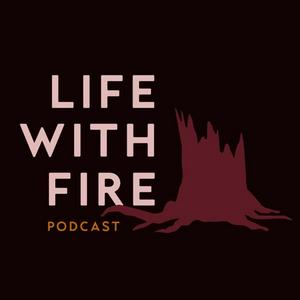
Get the free radio.net app
- Stations and podcasts to bookmark
- Stream via Wi-Fi or Bluetooth
- Supports Carplay & Android Auto
- Many other app features
Get the free radio.net app
- Stations and podcasts to bookmark
- Stream via Wi-Fi or Bluetooth
- Supports Carplay & Android Auto
- Many other app features


Life with Fire
download the app,
start listening.
